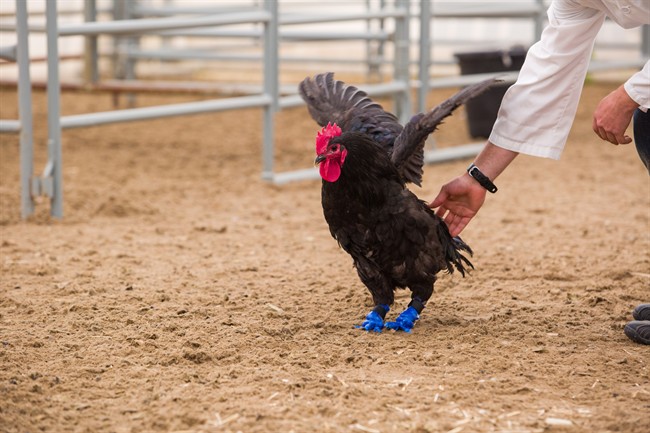CALGARY – A rooster who lost both of his feet to frostbite is cock of the walk once more thanks to researchers from the University of Calgary.

Foghorn had just stumps and couldn’t walk when bylaw officers took him from a city property earlier this year.
Daniel Pang, an assistant professor at the university’s faculty of veterinary medicine, learned of Foghorn’s condition and wanted to help.
He talked to faculty colleague Mark Ungrin, who does some work in his lab on simulated body parts.
WATCH: Rescued tortoise in Colorado receives 3D printed protective shell
Ungrin tasked a mechanical engineering student working in his lab with creating prosthetics for Foghorn using a 3D printer.
Douglas Kondro’s first attempt wasn’t successful, but his second try had Foghorn strutting his stuff once more.
The fortunate fowl has been adopted by a family and has a new home on a rural property north of Calgary.
“I went and got some moulds of his stubs and scanned them to make a computer model. I got my hands on some wild turkey feet and used the scanner for that as well.” Kondro explained.
READ MORE: UVic project uses 3D technology to build prosthetic devices for people in developing countries
“Then I printed off the stumps and printed off the new feet and painted them with silicone so they’d be sturdy, but flexible, and soft for the rooster.”
The first ones didn’t work.
“He couldn’t really walk and kept falling over so I was pretty disappointed,” Kondro said. “So I made version 2.0 and I strapped the feet onto him.
“It was pretty exciting to see him strut around.”



Comments